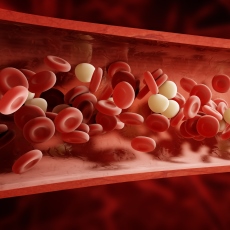
Bleeding is the loss of blood. It can be external, or outside the body, like when you get a cut or wound. It can also be internal, or inside the body, like when you have an injury to an internal organ. Some bleeding, such as gastrointestinal bleeding, coughing up blood, or vaginal bleeding, can be a symptom of a disease.
Normally, when you are injured and start bleeding, a blood clot forms to stop the bleeding quickly. Afterwards, the clot dissolves naturally. To be able to make a clot, your blood needs blood proteins called clotting factors and a type of blood cell called platelets. Some people have a problem with clotting, due to another medical condition or an inherited disease. There are two types of problems:
- Bleeding (National Library of Medicine)Bleeding is the loss of blood. It can be external, or outside the body, like when you ... have an injury to an internal organ. Some bleeding, such as gastrointestinal bleeding, coughing up blood, or ...
- Vaginal Bleeding (National Library of Medicine)Menstruation, or period, is a woman's monthly bleeding. Abnormal vaginal bleeding is different from normal menstrual periods. It could be bleeding that is between periods, is very heavy, or lasts much ...
- Gastrointestinal Bleeding (National Library of Medicine)... intestine, large intestine or colon, rectum, and anus. Bleeding can come from any of these areas. The amount of bleeding can be so small that only a lab ...
- Hemorrhagic Stroke (National Library of Medicine)... brain cells begin to die. Causes include a bleeding aneurysm, an arteriovenous malformation (AVM), or an artery ... first steps are to find the cause of bleeding in the brain and then control it. Surgery ...
- Bleeding Disorders (National Library of Medicine)... body forms a blood clot to stop the bleeding. For blood to clot, your body needs cells ... known as clotting factors. If you have a bleeding disorder, you either do not have enough platelets ...
- ... cells called platelets. These cells keep you from bleeding too much by helping your blood clot. Chemotherapy, ... some of your platelets. This can lead to bleeding during cancer treatment .
- Abnormal uterine bleeding (AUB) is bleeding from the uterus that is longer than usual or that occurs at an irregular time. Bleeding may be heavier or lighter ...
- Gastrointestinal (GI) bleeding refers to any bleeding that starts in the gastrointestinal tract. Bleeding may come from any site along the ...
- Subarachnoid hemorrhage is bleeding in the area between the brain and the thin tissues that cover the brain. This area is called the ...
- This article discusses vaginal bleeding that occurs between a woman's monthly menstrual periods. Such bleeding may be called "intermenstrual bleeding." Related topics include: Dysfunctional uterine ...



